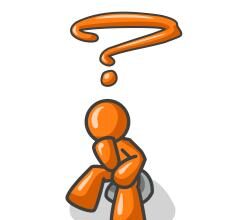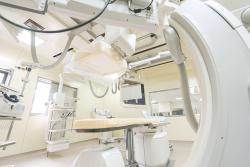- 1. Automating Check In Processes
- 2. Avoiding Unnecessary Visits
- 3. The Rise of Telemedicine
- 4. Less Invasive Scanning
- 5. Greater Access to Online Records
- 6. Preventing Doctor Shopping and Overdose
- 7. Improving Rates of Injury
- 8. Making the ER More Sustainable
- Technology Makes the ER Experience Better and Safer for All
Those who work in the emergency room (ER) know the importance of making every second count. When a patient presents with serious injury or disease, a matter of minutes can make a huge difference in the eventual outcome.
Technology plays a role in making ER visits more pleasant and less traumatic for staff and patients alike. Patients can enjoy benefits such as access to online health records and automated check-in processes. Staff benefits from fewer errors, exposure to liability and injuries on the job. Here are eight ways tech is changing ER treatment for the better.
1. Automating Check In Processes
The number one complaint people express about the ER is the wait time. ER staff understands a torn artery in Room 2 takes priority over the status migrainosus case in Room 11, but patients in agony find the triage line more blurry.
Automated check-in procedures come to the rescue. While few ERs incorporate technology like beepers the way restaurants do, allowing online check-in gives patients an approximate time frame for arrival. While imperfect, such technology does alleviate the problem of overcrowded waiting rooms somewhat, although homeless patients may continue to use such facilities to get warm.
2. Avoiding Unnecessary Visits
Online services can also keep patients not in need of ER services at home. By allowing patients to enter their symptoms, artificial intelligence (AI) can make a baseline determination of need. Medical staff then can evaluate such reports on a case-by-case basis to determine which patients to call in and which to advise to stay home.
This potentially allows ER departments to stay out of lawsuits. The recent case of one department which paid $260 million to settle whistleblower lawsuits illustrates how using home diagnosis software safely could help hospitals keep more of their profits.
3. The Rise of Telemedicine
For patients who live in rural areas, telemedicine is a true lifesaver. This technology allows patients to meet with specialists via computer screen when otherwise, they may drive hundreds of miles for one consultation.
A nurse practitioner monitors such sessions and takes vitals such as height and weight for determining medication dosages. Specialists like psychiatrists can reduce the number of missed appointments they experience due to lack of patient transportation.
4. Less Invasive Scanning
Medical scanning devices such as computerized axial tomography (CAT) scanners have grown smaller. This represents a major benefit to patients, but primarily to care providers who may face exposure to radiation daily. Medical experts agree the less radiation exposure an individual receives, the better, so these devices may draw more to the radiology profession and assuage patient fears.
5. Greater Access to Online Records
Technology allows patients to access and download their health records. In an increasingly mobile society, this helps improve continuity of care. Physicians and providers also can transmit test results instantly to referral doctors, such as orthopedists for broken bones.
Greater access to medical records also equates to better quality of care while in the ER. For example, if a patient is unconscious, immediate access to their medical records can prompt doctors as to if this condition results from known epilepsy or a rarer neurological condition or is evidence of stroke.
6. Preventing Doctor Shopping and Overdose
The opioid epidemic continues to ravage America with 130 people dying of opiate-related causes every day. Improvements in technology allow physicians to cross-check prescriptions in real time to avoid doctor shopping. This occurs when patients visit several hospitals in a short period of time in an attempt to obtain multiple scrips.
7. Improving Rates of Injury
Predictive technology can help prevent patient falls. Patients often feel the need to tend to themselves in the ER, including trying to make it to the restroom when doing so alone is inadvisable. Technology such as virtual sitter can reduce patient falls by alerting staff when patients are on the go.
Such technology can also save considerable money. In one study, virtual sitter technology reduced the cost of nurse attendants from $350 per inpatient a day to only $29. Considering the high price of health care services, implementing any cost-saving measures makes sound fiscal sense.
8. Making the ER More Sustainable
Hospitals create a ton of hazardous waste, and technology can help lessen the environmental impact of providing the highest-quality care. Going green can also provide cost savings for health care providers. Greenwich Hospital in Connecticut, for example, recently saved $303,000 per year by retrofitting with Energy-Star appliances.
Technology such as steam sterilization can help hospitals and health care offices reduce their dependence on single-use plastics. Resourcing meals from locally-grown products can save on carbon emissions from transportation costs. And the recent passage of the Farm Bill allowing the growth of industrial hemp will reduce the number of trees culled annually for coating patient examination beds, etc.
Technology Makes the ER Experience Better and Safer for All
Technology has the potential to reduce injury, save money and help health care facilities become more sustainable. With so much to gain, industry leaders do well to stay on top of upcoming developments which can improve patient care.








